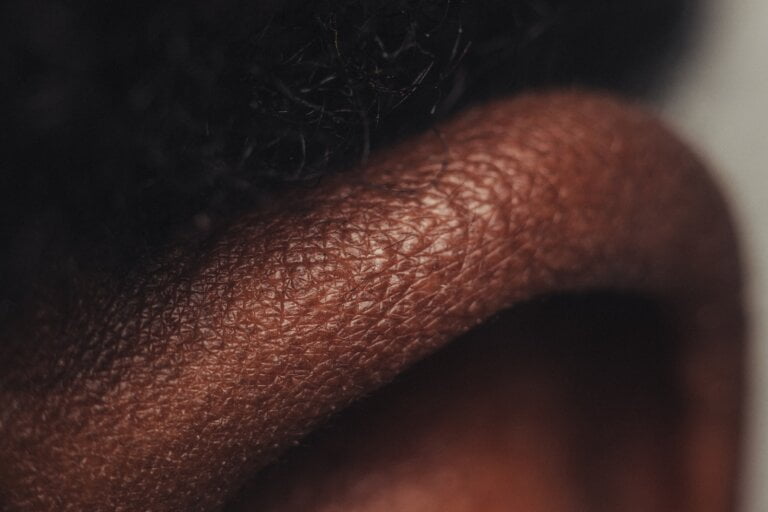Shielding Little Ears: Effective Prevention Techniques for Ear Infections
Ear infections can be a common and painful experience, especially for young children. As a parent or caregiver, it is essential to take proactive measures to prevent these infections and protect your little one’s delicate ears. In this article, we will discuss several effective prevention techniques that can help shield your child’s ears from infections.
Understanding Ear Infections
Before diving into prevention techniques, let’s briefly understand what ear infections are. An ear infection, also known as otitis media, occurs when bacteria or viruses cause inflammation and infection in the middle ear. This condition is more prevalent in children due to their smaller and less developed Eustachian tubes, which connect the middle ear to the throat.
Common symptoms of an ear infection include earache, fever, irritability, difficulty sleeping, fluid drainage from the ear, trouble hearing, and loss of appetite. If you notice any of these symptoms in your child, it is crucial to consult a healthcare professional for a proper diagnosis and treatment.
Prevention Techniques
- Maintain Good Hygiene: Practicing good hygiene is a fundamental aspect of preventing ear infections. Teach your child to wash their hands regularly, especially before meals and after using the restroom. This simple habit can help reduce the spread of bacteria and viruses that can lead to ear infections.
- Use soap and warm water to wash hands thoroughly for at least 20 seconds.
- Encourage proper coughing and sneezing etiquette, such as covering the mouth and nose with a tissue or elbow.
- Disinfect frequently touched surfaces, such as doorknobs and toys, to minimize the risk of contamination.
- Avoid Exposure to Secondhand Smoke: Secondhand smoke can irritate the respiratory system and increase the risk of ear infections. If you or anyone in your household smokes, it is essential to do so outside the house and away from your child. Creating a smoke-free environment can significantly reduce the chances of ear infections.
- Designate specific outdoor areas for smoking and ensure that smoke does not enter the house.
- Consider quitting smoking altogether to protect not only your child’s ears but also their overall health.
- Educate family members and caregivers about the importance of avoiding smoking near the child.
- Breastfeed Your Baby: Breastfeeding provides numerous health benefits for your baby, including a lower risk of ear infections. The antibodies present in breast milk help strengthen the immune system and protect against infections. If breastfeeding is not an option, consult your healthcare provider for guidance on choosing the best formula for your baby.
- Breastfeed exclusively for the first six months, if possible, to provide optimal protection against infections.
- Ensure a proper latch and positioning during breastfeeding to prevent milk from entering the Eustachian tubes.
- If using formula, follow the instructions for safe preparation and consider using a formula with added immune-boosting nutrients.
- Vaccinate Your Child: Following the recommended vaccination schedule is crucial for preventing various illnesses, including those that can lead to ear infections. Make sure your child receives all the necessary vaccinations as per the guidelines provided by healthcare professionals.
- Stay informed about the recommended vaccines for your child’s age group and consult with your pediatrician.
- Vaccines such as pneumococcal and influenza vaccines can significantly reduce the risk of ear infections.
- Keep a record of your child’s vaccinations and schedule regular check-ups to ensure they are up-to-date.
- Keep Your Child Away from Sick Individuals: Ear infections can be contagious, particularly if they are caused by viruses. If someone in your household or your child’s surroundings is sick, try to limit the contact between your child and the infected individual. This precaution can help reduce the risk of exposure to germs that can cause ear infections.
- Encourage sick family members or caregivers to wear a mask and practice good respiratory hygiene.
- Avoid crowded places, especially during flu season, to minimize the chances of exposure to infectious individuals.
- Teach your child about the importance of personal space and avoiding close contact with sick individuals.
- Avoid Bottle-Feeding While Lying Down: Feeding your baby while they are lying down can increase the chances of developing ear infections. When a child drinks from a bottle in a horizontal position, it allows fluids to accumulate in the Eustachian tubes, creating a breeding ground for bacteria. Make sure to hold your baby upright or at a slight angle during feedings to prevent this.
- Support your baby’s head and keep them in an upright position while bottle-feeding.
- Use a bottle with a well-designed nipple that allows for proper flow control and minimizes the risk of fluid accumulation.
- Avoid propping the bottle and leaving the baby unattended during feedings.
- Minimize Pacifier Use: Although pacifiers can provide comfort to babies, prolonged and continuous use can increase the risk of ear infections. Try to limit the time your child spends with a pacifier, especially during sleep. If your child relies heavily on pacifiers, consult your healthcare provider for guidance on gradually phasing them out.
- Introduce other soothing techniques, such as swaddling or rocking, to reduce the reliance on pacifiers.
- Use pacifiers that are specifically designed to promote proper oral development and minimize the risk of ear infections.
- Gradually decrease pacifier use during daytime naps and then progress to nighttime.
- Avoid Environmental Allergens: Allergens such as pollen, dust mites, and pet dander can irritate the respiratory system, leading to an increased risk of ear infections. Keep your child’s environment clean and free from potential allergens. Regularly dust and vacuum your home, use hypoallergenic bedding and pillows, and minimize exposure to pets if your child is allergic.
- Use high-efficiency particulate air (HEPA) filters to reduce allergens in the air.
- Keep windows closed during high pollen seasons and use air conditioning or air purifiers.
- Wash bedding and stuffed toys regularly in hot water to eliminate dust mites.
- Promote Healthy Nutrition: A well-balanced diet plays a significant role in boosting the immune system and preventing infections. Provide your child with a variety of fruits, vegetables, whole grains, and lean proteins. Limit the consumption of processed foods and sugary snacks, as they can weaken the immune system and make your child more susceptible to infections.
- Include immune-boosting foods in your child’s diet, such as citrus fruits, berries, leafy greens, yogurt, and lean meats.
- Offer healthy snacks like sliced fruits, vegetable sticks, and whole-grain crackers instead of sugary treats.
- Encourage family meals and set a positive example by consuming nutritious foods yourself.
-
Encourage Regular Physical Activity: Regular exercise helps strengthen the immune system and overall well-being. Engage your child in age-appropriate physical activities that they enjoy, such as swimming, dancing, or playing outdoors. Physical activity promotes healthy circulation and can reduce the risk of ear infections.
- Plan family activities that involve movement, such as hiking, biking, or playing sports together.
- Limit sedentary activities, such as excessive screen time, and encourage active play instead.
- Ensure safety during physical activities by providing appropriate protective gear and supervision.
Taking a proactive approach to prevent ear infections can save your child from unnecessary pain and discomfort. By implementing these effective techniques, you can shield your little one’s ears and promote their overall health and well-being. Remember, if your child experiences recurrent or severe ear infections, it is crucial to seek medical advice for proper diagnosis and treatment.
Note: This article is not a substitute for professional medical advice. Consult a healthcare professional for specific guidance tailored to your child’s individual needs.
Q: What are the common symptoms of an ear infection in children?
A: Common symptoms of an ear infection in children include earache, fever, irritability, difficulty sleeping, fluid drainage from the ear, trouble hearing, and loss of appetite.
Q: How can I prevent ear infections in my child through good hygiene?
A: To prevent ear infections through good hygiene, teach your child to wash their hands regularly with soap and warm water for at least 20 seconds. Encourage proper coughing and sneezing etiquette, such as covering the mouth and nose with a tissue or elbow. Disinfect frequently touched surfaces to minimize the risk of contamination.
Q: How can breastfeeding help prevent ear infections in babies?
A: Breastfeeding provides numerous health benefits for babies, including a lower risk of ear infections. The antibodies present in breast milk help strengthen the immune system and protect against infections. Breastfeed exclusively for the first six months, if possible, and ensure a proper latch and positioning during breastfeeding to prevent milk from entering the Eustachian tubes.
Q: Why is it important to vaccinate my child to prevent ear infections?
A: Following the recommended vaccination schedule is crucial for preventing various illnesses, including those that can lead to ear infections. Vaccines such as pneumococcal and influenza vaccines can significantly reduce the risk of ear infections. Stay informed about the recommended vaccines for your child’s age group and consult with your pediatrician.







